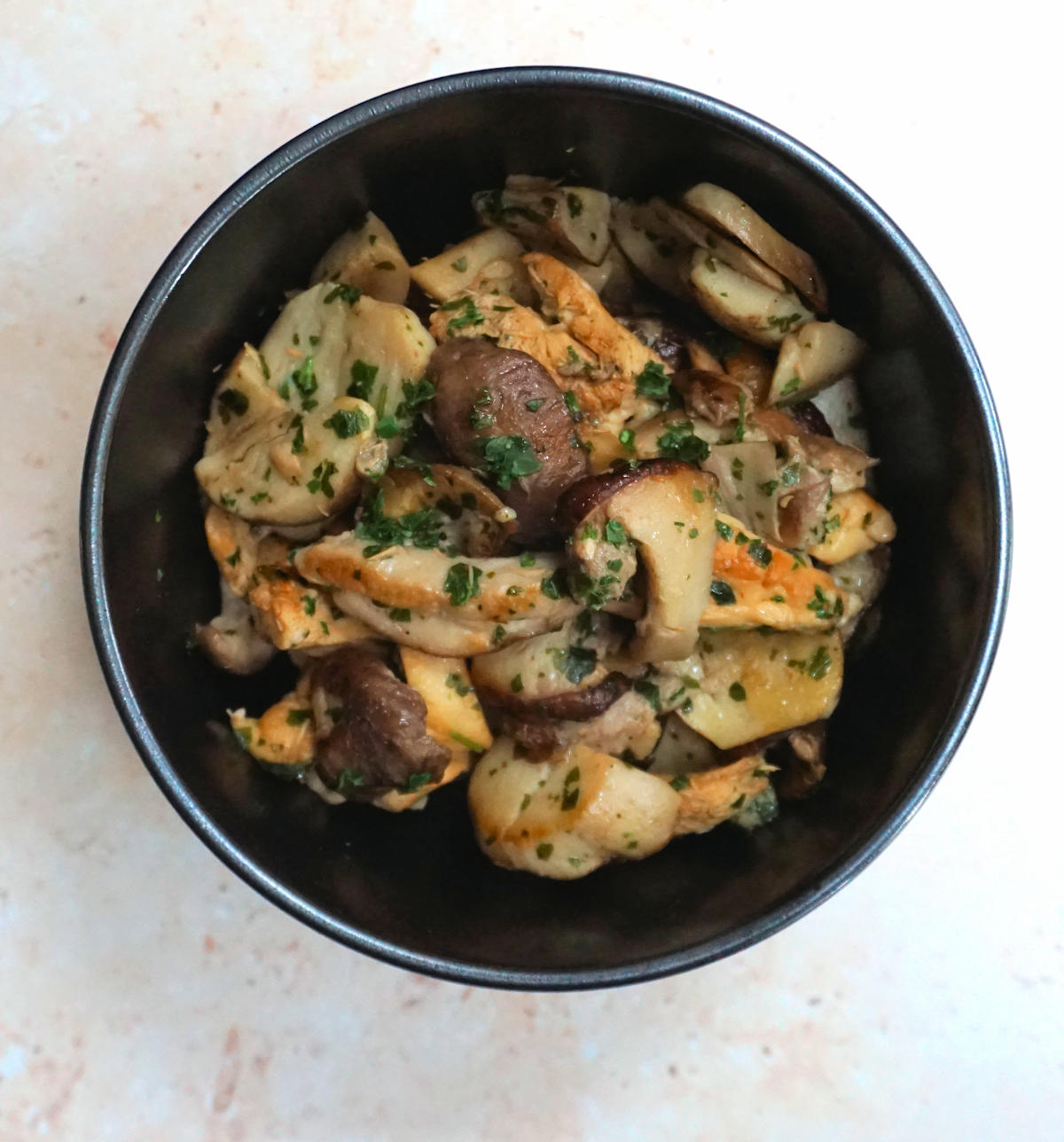Wild mushrooms are best cooked simply: sauteed with a little butter, seasoned with just salt and pepper and a sprinkling of fresh parsley.

Ceps or porcini or penny buns are the elite of wild mushrooms. Milkcaps, chanterelles and girolles are the middle stratum, and then there are pied de moutons aka hedgehog mushrooms and king oysters. But whatever mix you can forage or buy, they will be superior to cultivated mushrooms.
Wild mushroom paradise
I went to Munich one October a while ago and in the famous Viktualienmarkt I saw paradise. Stalls and stalls of wild mushrooms, nothing else but the most beautiful fungi. There must have been a tonne of them.
There were beautiful ceps, white hedgehogs, sunny chanterelles, murky trumpets, milkcaps – I could have lived there. Right there in the market, at least until the end of the wild mushroom season.
Of all things foraged, mushrooms are the best; in fact, wild mushrooms are my food heaven. I think I could just LIVE on wild mushrooms, or at least eat them every day, throwing in a scrap of bread or cheese every now and then.
Sadly, I can’t put it to the test as the wild mushrooms you can forage in England are very few and far between. Somehow the types of English forests and the forest floor are not conducive to fungal growth, or at least the consumable varieties.
Plenty inedible mushrooms
Apparently there are about 15,000 types of wild fungi in the UK but I have only ever come across the inedible ones. There are plenty of those springing up in my garden each autumn.
Edible fungi in England are scarce and not the choicest: there are no ceps or morels, nor even many native chanterelles.
Scotland fares better so every autumn I spend a small fortune on Scottish chanterelles, the only variety in relative abundance and one that survives transport.
I get my fix. I treat them with respect: cooking as simply as possible, with not too much seasoning.
Ceps (porcini or penny buns) are actually perfectly safe to eat and delicious raw, sliced into a salad.
How to clean wild mushrooms?
This recipe features a mix of chanterelles and pied de moutons.
Don’t wash them: if they soak up water, they will become soggy and shrink to nothing in cooking.
Wild mushrooms are clean beasts with just a little soil or pines, or sand on them; there are obviously no pesticides or nasty stuff on the wild things.
Cooking wild mushrooms: simply does it
Chop up the larger ones roughly or keep them all whole, whichever you prefer. They only need a little butter and when it foams in the skillet, in they should go.
‘Sautéing’ means ‘jumping’ so the best way to stir the mushrooms is to toss them in the pan in a cheffy fashion. If that’s not your forte, stir them with a spatula.
They will release an amount of juice depending how wet the weather they grew in. That’s of course a feature of non-cultivated produce.
If they are rather wet, cook them longer until the juices are re-absorbed. And then finish the dish off simply and elegantly: with just a touch of crème fraiche and a sprinkling of parsley.
More wild mushroom recipes
It’s a starter fit for a king’s feast: fresh, raw porcini (cep) wild mushrooms, thinly sliced and barely seasoned with fine salt, finer olive oil and a feather of best Parmesan.
Also seasonal, pan-fried guinea fowl breast with fresh wild mushrooms is the epitome of an autumnal dish.
Chanterelles or girolles, the former more precise as derived from the Latin name of the species, are the little sunny autumnal pots of flavour. No fuss cooking, serve them on toast for an amazing treat.
More mushroom side dish recipes
Creamy mushrooms, lovely as a side dish paired with steak. An easy recipe for velvety creamy and garlicky shiitake mushrooms.
Flat iron mushrooms, a mix of cultivated mushrooms pressed flat whilst cooking, to concentrate and wonderfully enhance their flavour.
Garlic mushrooms with parsley - simple and delicious. Season them generously and fry them with garlic - so tasty just with a chunk of bread. This is a suggestion for a lovely side dish.